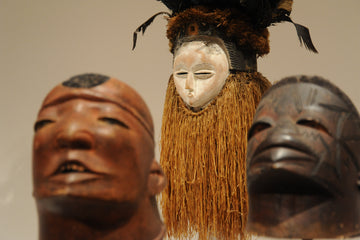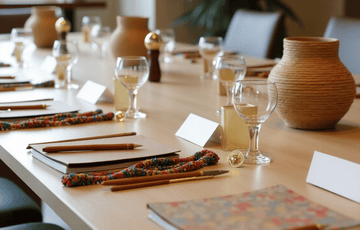
African Masks have a commanding presence that makes you just want to keep staring at their genius .They have influenced notable artists like Pablo Picasso and Andre Derain, and many generations after. Most recently, African masks have become a design essential when decorating spaces. They are bold and intriguing, others intimidating and some may be colorful and funny.
African masks have been in use for thousands of years by various cultures and tribes across Africa. They are an integral part in rituals and ceremonies and serve varied purposes depending on the tribes that make and use them.
Why they are carved
 In some cultures, masks are carved after ancestors or great men and women in the community, others represent totem animals, nature spirits, or deities. Some combine human and animal features to unite man with his natural environment. The bond with nature and the spirit world is of great importance to many tribal cultures across Africa. Through the ages, masks have always been used to express this relationship.(Art Factory)
In some cultures, masks are carved after ancestors or great men and women in the community, others represent totem animals, nature spirits, or deities. Some combine human and animal features to unite man with his natural environment. The bond with nature and the spirit world is of great importance to many tribal cultures across Africa. Through the ages, masks have always been used to express this relationship.(Art Factory)
A special status is attributed to artists that make them. In most communities, the art of mask-making is a skill that is passed down from generation to generation. The Knowledge of mask making and the special meanings associated with each is also passed down from father to son.

Ceremonial and ritualistic masks
Though they vary in use for many communities, there’s a similarity in most African cultures when it comes to religious and ceremonial purposes of masks. Most ceremonial and ritualistic masks are only worn by members of an elite order of masqueraders. It is believed that the mask wearer becomes a medium, capable of communicating with spirits and ancestors on behalf of the community. They come to life during dance, when the spirit posses the mask wearer.😊
What are they made of
African masks come in different shapes and sizes. Some only cover the face, while others cover the body too depending on the use. Most are primarily carved from wood but can also be made of stone, glazed pottery, ivory, brass, copper, bronze, or leather.
Some are adorned and decorated with cloth, raffia and other plant fibers, shells, beads, found objects like porcupine quills and other natural objects, feathers, horns, paint, nails, colored glass.








